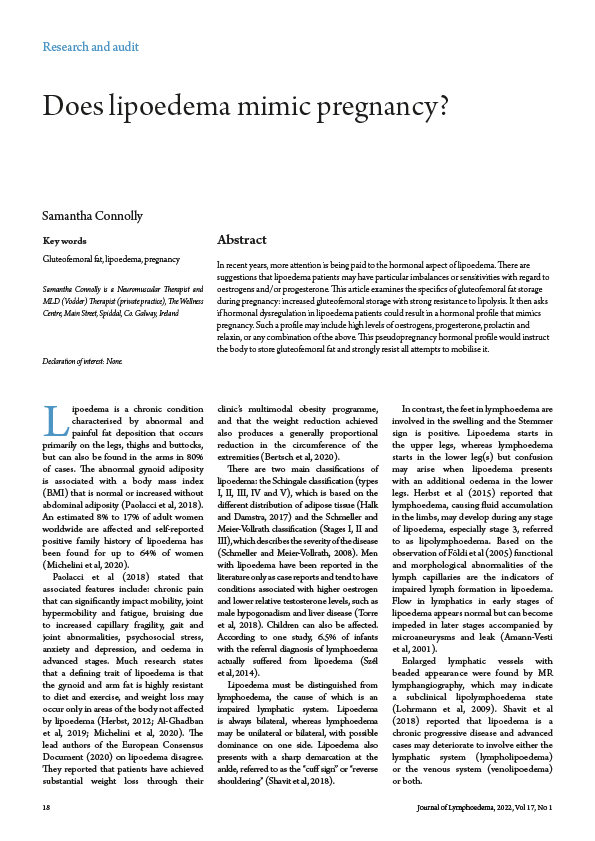In recent years, more attention is being paid to the hormonal aspect of lipoedema. There are suggestions that lipoedema patients may have particular imbalances or sensitivities with regard to oestrogens and/or progesterone. This article examines the specifics of gluteofemoral fat storage during pregnancy: increased gluteofemoral storage with strong resistance to lipolysis. It then asks if hormonal dysregulation in lipoedema patients could result in a hormonal profile that mimics pregnancy. Such a profile may include high levels of oestrogens, progesterone, prolactin and relaxin, or any combination of the above. This pseudopregnancy hormonal profile would instruct the body to store gluteofemoral fat and strongly resist all attempts to mobilise it.





